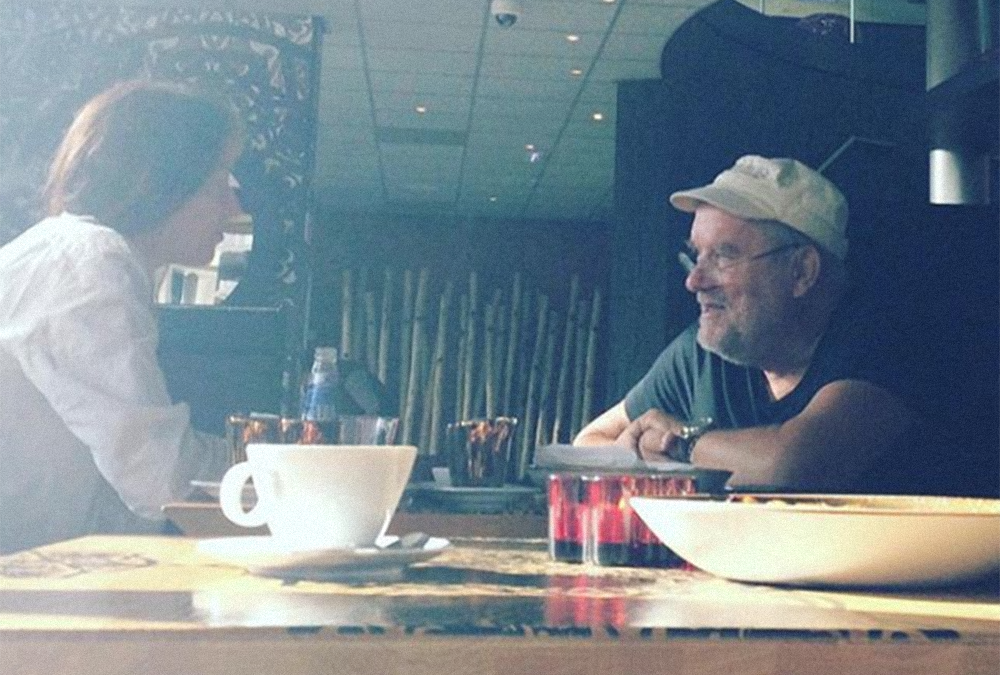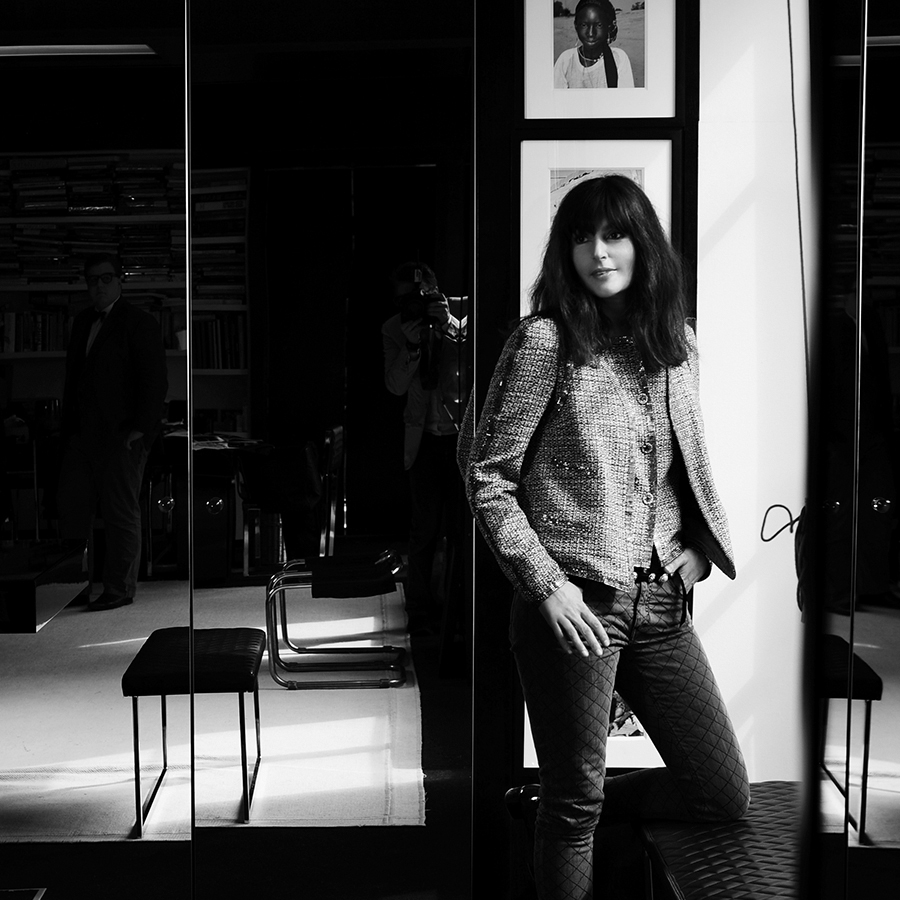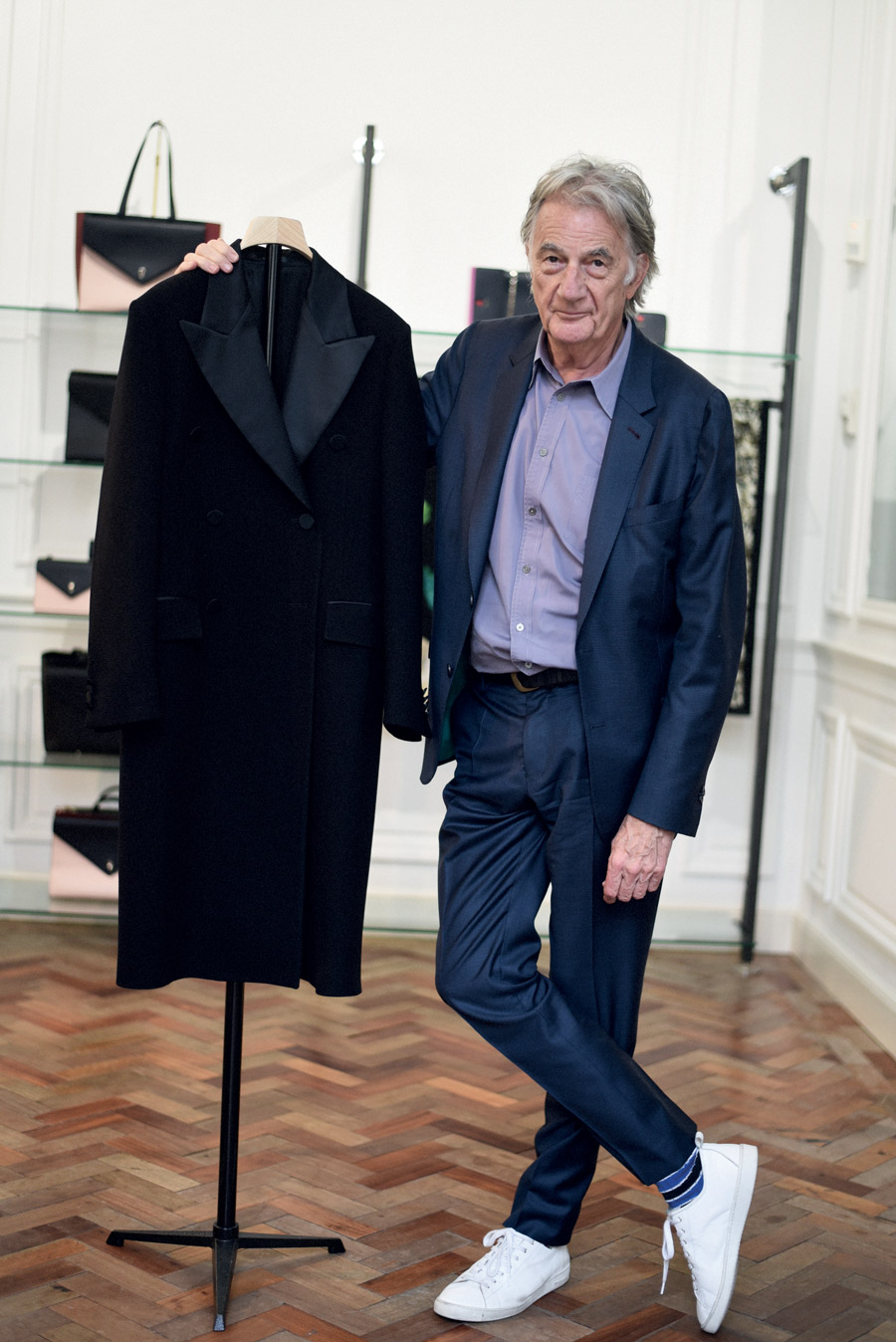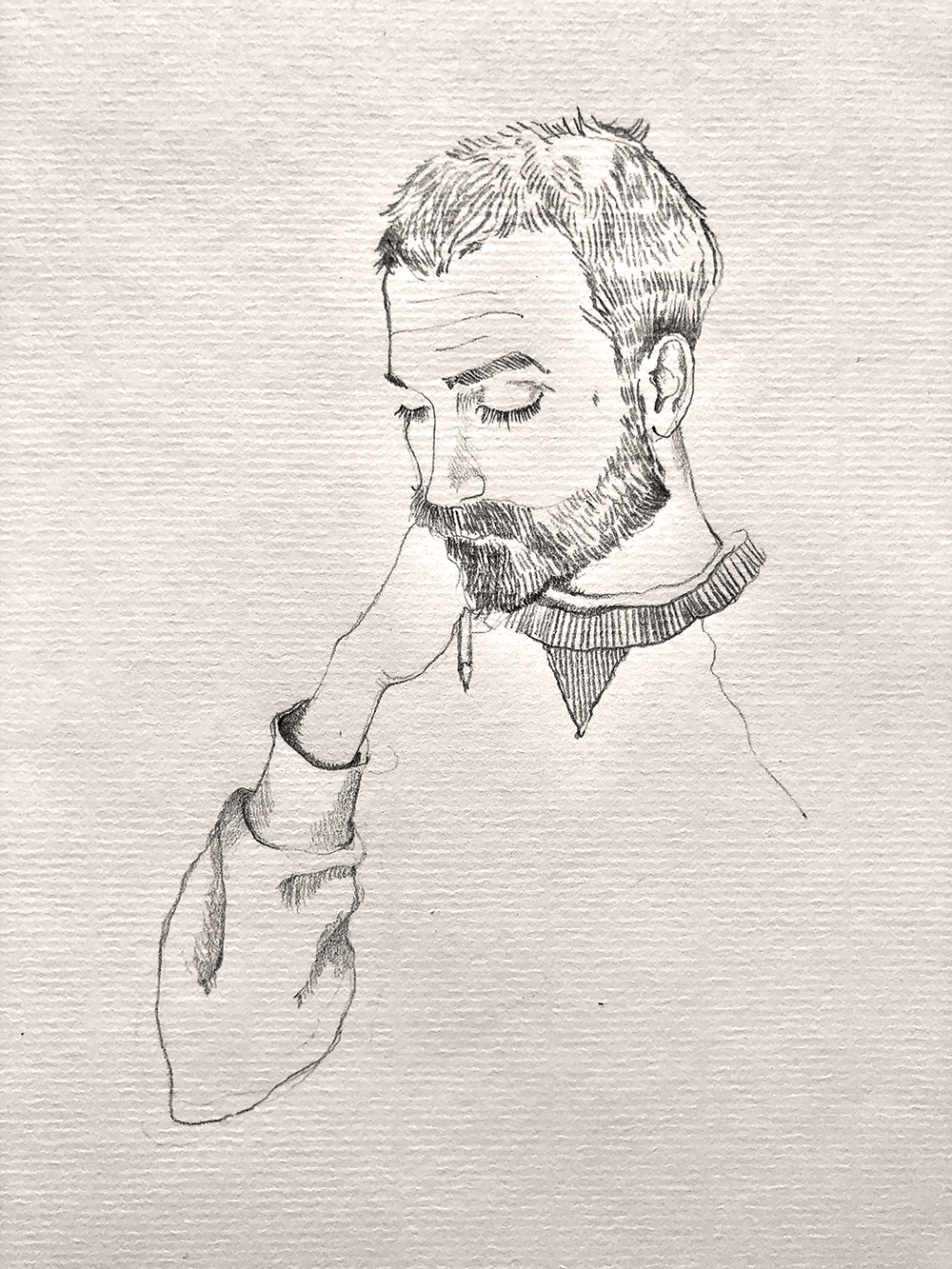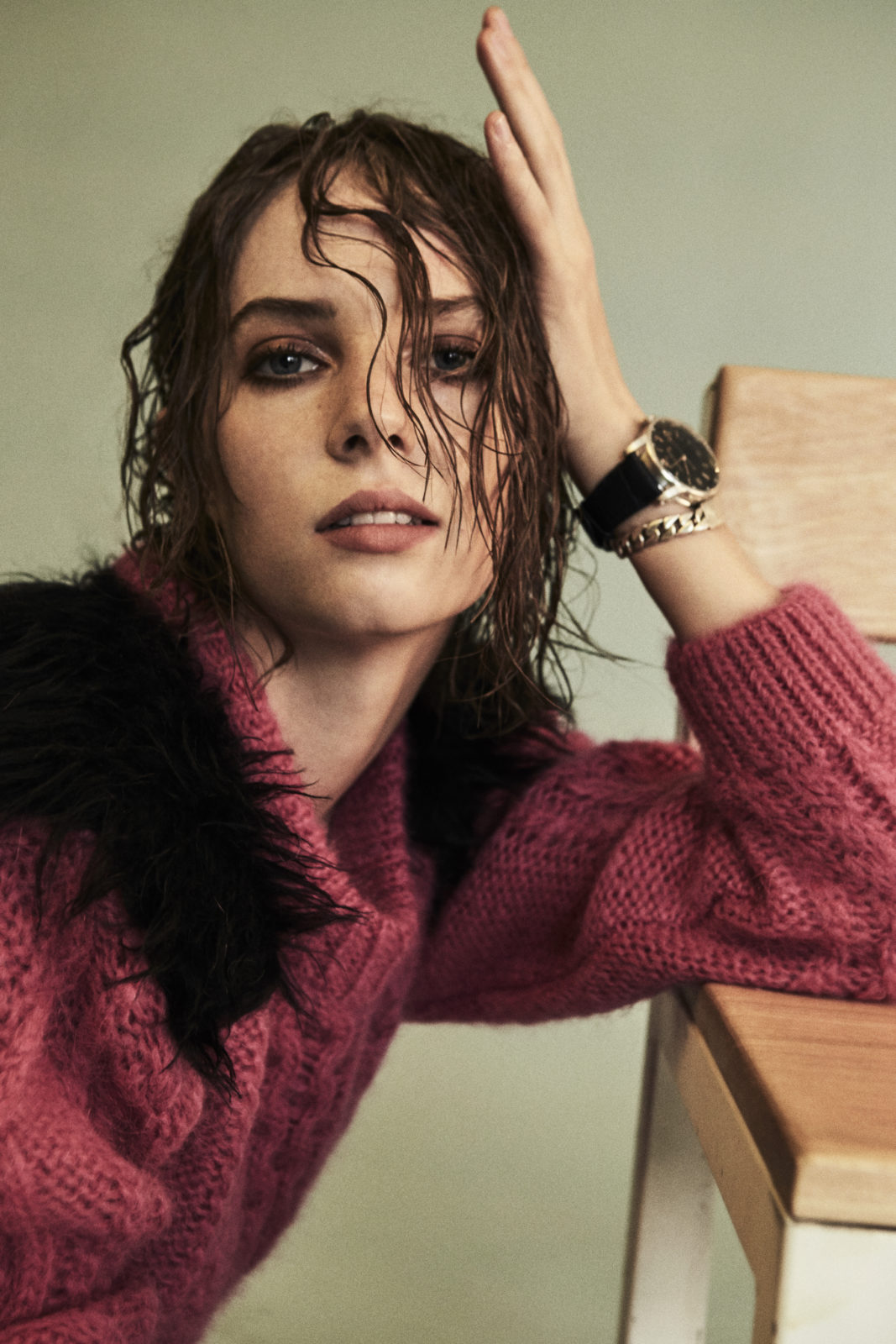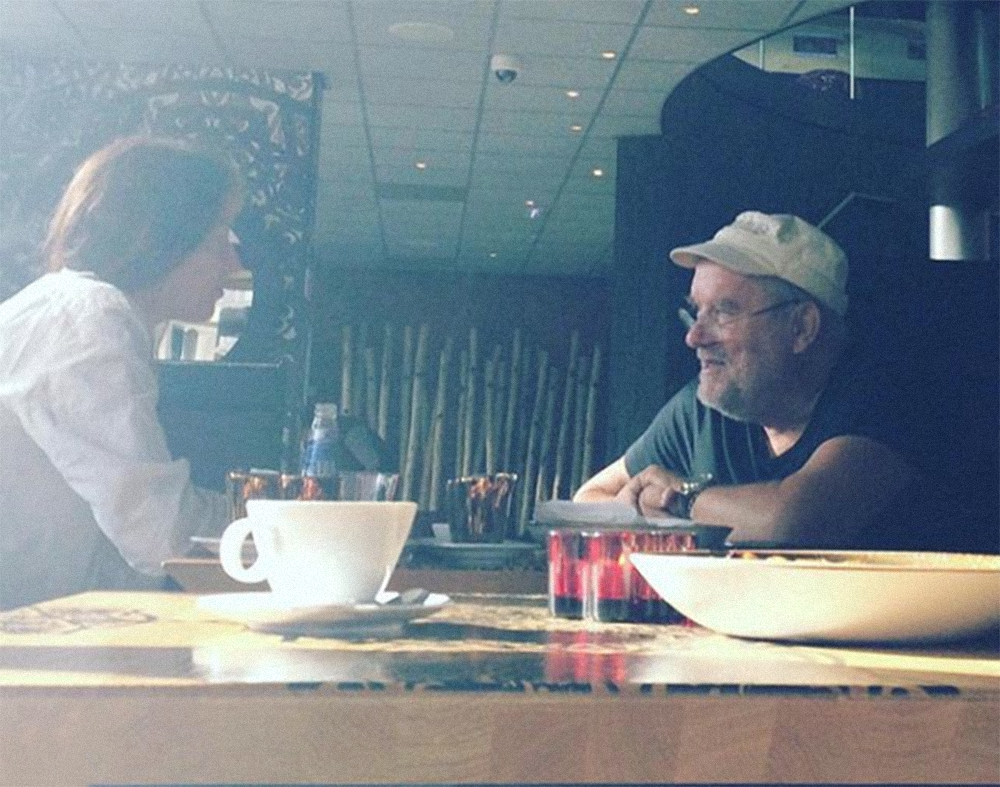
Armelle Leturcq and Peter Lindbergh in conversation
A MEETING BETWEEN PETER LINDBERGH & ARMELLE LETURCQ
By Armelle Leturcq
We have learned the tragic news of the legendary photographer Peter Lindbergh’s death. In his memory, here is a meeting we conducted with him from 2016.
Peter Lindbergh’s photography is bold and captivating. His monochrome pictures have changed the course of fashion and redefined aesthetic standards by focusing on natural beauty. Through an exceptional retrospective featuring more than two hundred classic snapshots, Kunsthal Rotterdam, with the support of Swarovski, offers visitors the chance to discover the work of one of the most influential photographers of his generation. In a straight-shooting interview with Crash, Lindbergh reveals his vision of fashion photography.
Can you tell us a little bit about the exhibition?
It’s an exhibition that came together little by little, through a marvelous collaboration between the Kunsthal, Thierry-Maxime Loriot, and myself. Those conditions can be felt throughout the exhibition, since it is so much different than any of the previous exhibitions: it bears a particularly strong connection to the fashion world. Though I didn’t want to cultivate this connection at first; in fact, I rejected it. Instead I wanted to keep a certain distance, to use the unique angle that I take, which is not a fashion angle. For me, the clothing always comes second.
How did you get involved in fashion?
I started doing fashion photography because it was the freest genre at the time, the field that offered the most creative freedom to photographers. Much more than in advertising, for example. It was my son, Simon, who pushed me into it.
Photography was not always seen as an art form…
It’s true: photography galleries were one thing, and art galleries were quite another. Today the two are blending together more and more. I was talking with some of my friends and someone told me that the fashion photographer’s only purpose was to showcase clothing. I disagree completely: I think it’s terrible to limit fashion photographers to taking pictures of clothes. On the contrary, it’s crucial to give them the space they need to do something much bigger than that. Fashion is so much more than the clothes!
It’s incredible how your photos have withstood the test of time.
It’s because I don’t change my style to suit the times. In fact, I stopped going to fashion shows at least fifteen years ago, so that I can feel even more free. It helps me keep a certain distance; I’m not a part of the fashion world and that’s why my work is timeless.
Yet your photos convey a consistent style and a relationship with the designers!
Yes, that’s true. However, what’s most important for me is not the photograph’s starting point – it’s not the clothing or trend. I don’t believe that women exist simply to be decorated in a new way every six months. I think you have to forget about all that. Fashion doesn’t need to start from scratch every season. I prefer to say that I work in fashion, but not for fashion.
How important are the models in your photography?
I don’t think of myself as a fashion photographer. I’m a photographer who speaks to women and who talks about women through fashion. There’s a difference. I place a lot of importance on the model, and his or her emotions: I never let a model leave a shoot with something left unsaid. More than anything else I like accidents, like a fleeting giggle; those moments when models offer a glimpse of who they truly are. I’m totally against the typical magazine images that show expressionless women and call it “beauty.” I think it’s completely stupid and I don’t understand how a photographer can feel entitled to airbrush an entire life away through alterations, until they are left with an empty figure devoid of personality.
You don’t retouch your photos at all?
I only make very slight alterations. I think it’s essential to avoid the pitfall of creating a commercial image that portrays women in a certain way merely to sell clothes. That’s not my idea of beauty. I even wrote a short piece on that topic, explaining how women are now forced to serve as the ambassadors of perfection and eternal youth. That’s why I wanted to do a calendar with Pirelli: to use the media reach of that calendar to show that there is indeed another kind of beauty that most people do not want to see because it’s not commercial. It’s a kind of beauty that expresses the courage and will to be yourself.
Women are even more alienated and locked into an image of perfection today than they were in the 1960s.
The other day I got a call from a group called The Anti-Makeup Brigade, and to me that’s ridiculous because that’s not the real struggle. Women have every right to wear makeup if they want to.
Why do you always work in black-and-white?
I’ve also worked in color: it’s exciting and fun! There are even a few color photographs featured in the exhibition. For example, the Martian series is superb and includes a few polychrome snapshots.
How did you make the transition to digital?
I’ve always worked in digital, on the one hand because of the high technical quality, and on the other because it offers so many possibilities: playing with grayscales, contrasts, grain, rendering certain details more clearly, etc. The problem is that there is a big monitor at every shoot which everyone stares at and offers their opinions. I refuse to use these monitors. I even shoot wirelessly, too, because I move around a lot. I love portrait work and I think intimacy is crucial for those types of shots.
If you could only keep one picture from your entire body of work, which one would it be?
That’s an extremely complicated question! Any answer I could give you on the fly would be too superficial. Several of my photos have become icons for various reasons and are widely reprinted, which makes them more familiar to the public. To tell you the truth, it’s incredibly difficult to say which ones are the most important.
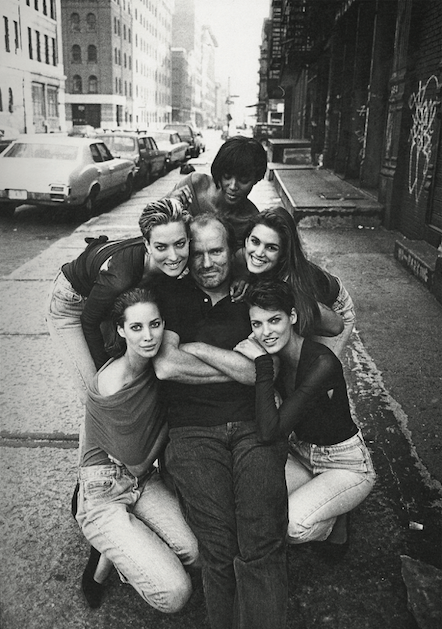
JIM RAKETE
Christy Turlington, Tatjana Patitz, Peter Lindbergh, Naomi Campbell, Cindy Crawford
& Linda Evangelista,
New York, 1990,
Behind the scenes photograph, Vogue UK cover shoot © Jim Rakete
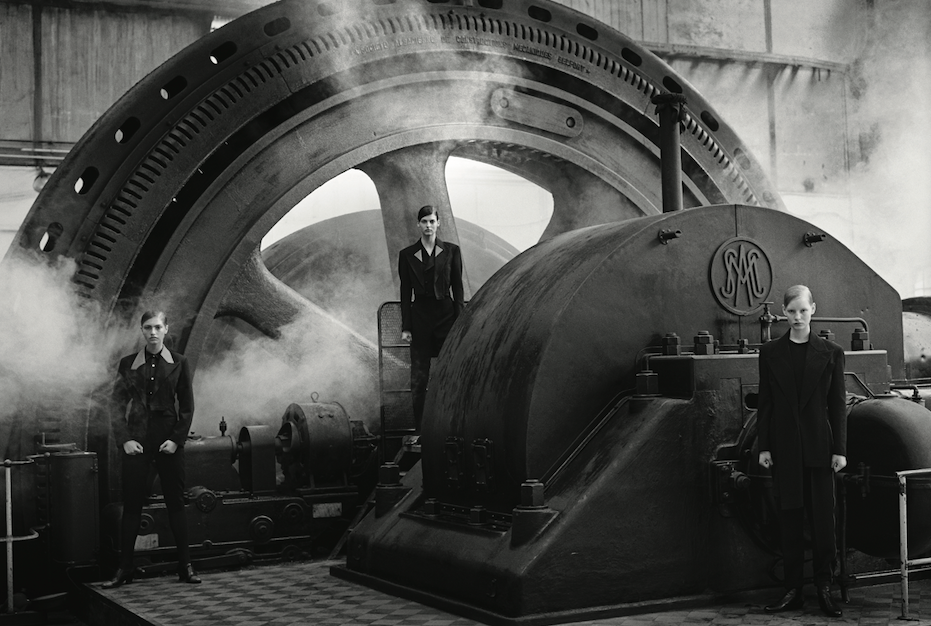
PETER LINDBERGH
Michaela Bercu, Linda Evangelista & Kirsten Owen, Nancy, 1988 Comme des Garçons advertising campaign, S/S 1988 / © Peter Lindbergh (Courtesy of Peter Lindbergh, Paris / Gagosian Gallery)
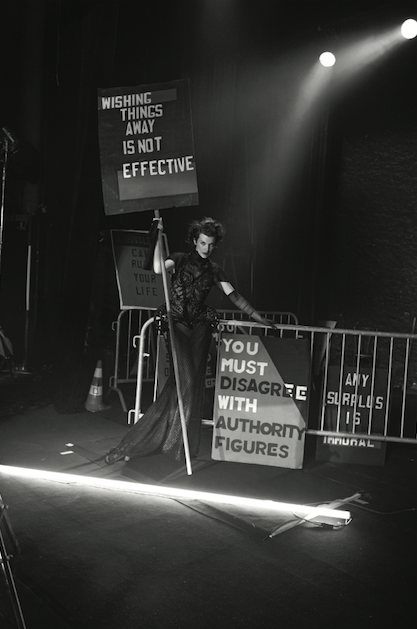
PETER LINDBERGH
Milla Jovovich, Paris, 2012 Vogue Italia
© Peter Lindbergh
(Courtesy of Peter Lindbergh, Paris / Gagosian Gallery) Made with crystals from Swarovski Gaultier Paris, F/W 2012-2013
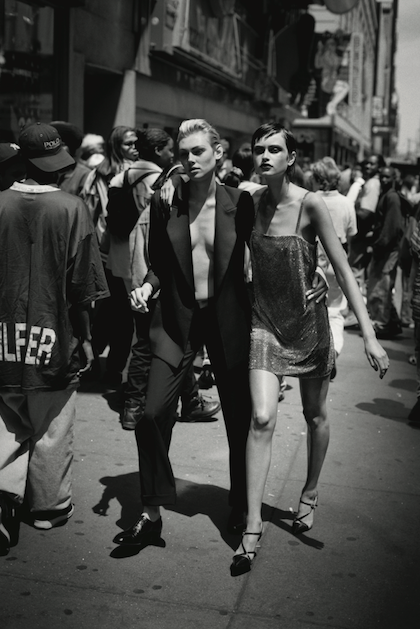
PETER LINDBERGH
Shirley Mallmann & Natalia Semanova, New York, 1997 Published in Vogue Italia, October 2007 © Peter Lindbergh
(Courtesy of Peter Lindbergh, Paris / Gagosian Gallery)
Versace dress made with crystals from Swarovski






